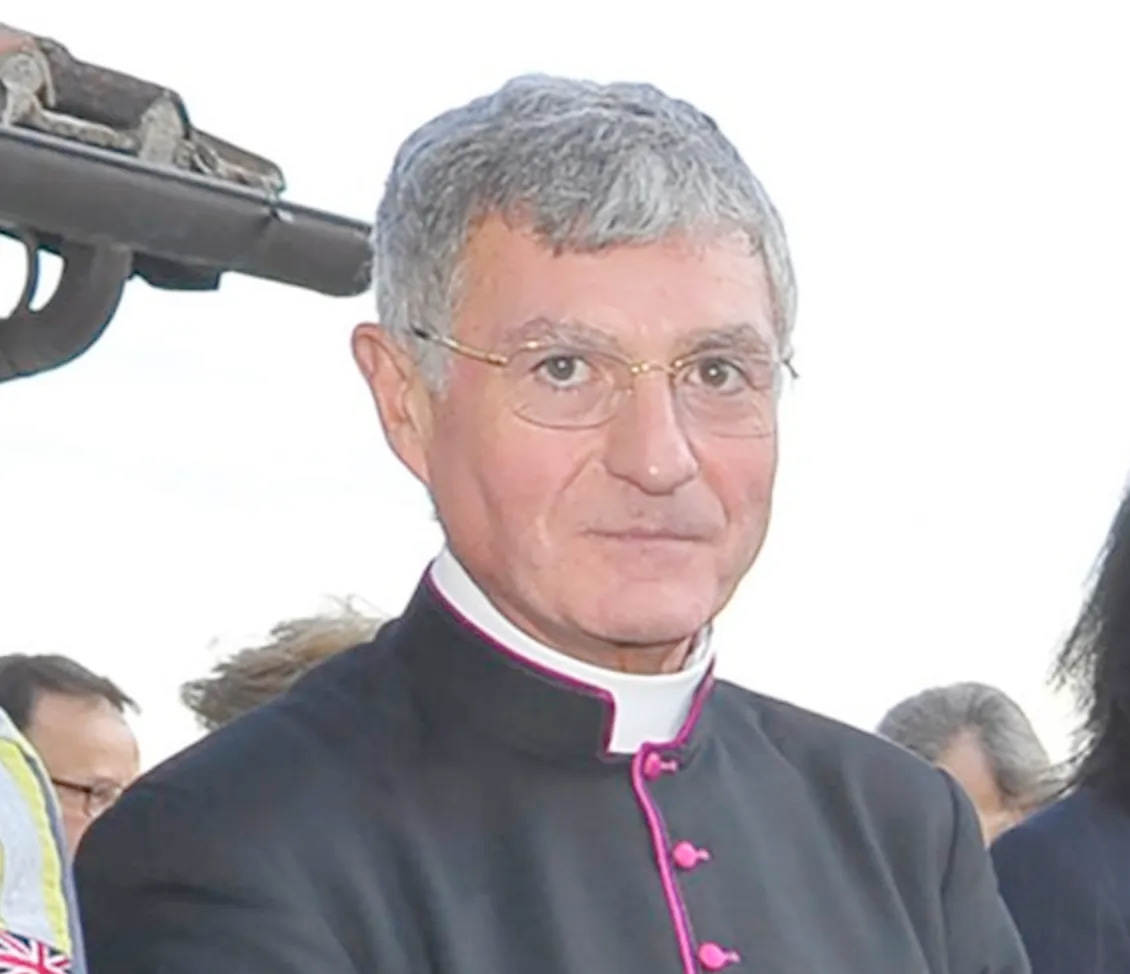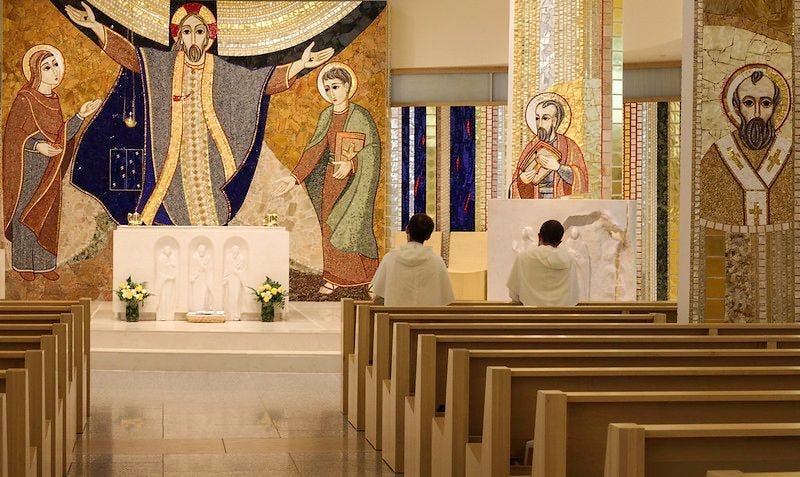Pope Francis on Monday arrived in Canada for a six-day “penitential pilgrimage” in atonement for the past mistreatment of First Nations people by the Church, and in Church-affiliated institutions.
The first day of the visit drew widespread media attention for the profound and personal apology delivered by the pope at an Indigenous cemetery in Maskwacis, at the Church of Our Lady of Seven Sorrows.
Francis is not the first pope to offer apologies in Canada. But, while his words were not received without criticism, it was still a striking moment, as he attempted to atone for the Church’s role in an episode in Canada’s national life which still sparks controversy.
“I am here,” Francis said on Monday, “because the first step of my penitential pilgrimage among you is that of again asking forgiveness, of telling you once more that I am deeply sorry.”
“Sorry for the ways in which, regrettably, many Christians supported the colonizing mentality of the powers that oppressed the Indigenous peoples. I am sorry. I ask forgiveness, in particular, for the ways in which many members of the Church and of religious communities cooperated, not least through their indifference, in projects of cultural destruction and forced assimilation promoted by the governments of that time, which culminated in the system of residential schools.”
Wrapped up in these three sentences is a long and, for many Indigenous families and peoples, profoundly painful part of Canadian history that drew international attention last year, with the discovery of more than 1,000 unmarked graves at the sites of former residential schools.
When the discoveries were first made, there was widespread speculation and assumption that many of these were mass graves of indigenous children who had died and been unceremoniously buried by the state-sponsored boarding schools, mostly run by the Catholic Church.
Catholic churches across Canada were subject to arson attacks, and public outcry mounted for a reckoning by the Church for its complicity in the residential schools system — including a visit by First Nations leaders to the Vatican to ask the pope to apologize on behalf of the Church and visit Canada to do so.
It later became clear that many of those burial sites found last year were cemeteries, where the individual graves were originally marked with wooden memorials, which had been overgrown and lost through neglect.
While that is a very different reality from deliberately unmarked mass graves, it does not negate that there is a dark history to be confronted, or a real purpose to the pope’s penitential visit.
But despite the clarity and simplicity of the pope’s apology on Monday, the history of the schools themselves is complex.
Some native communities have until recently expressed mixed memories of them, and the schools have not always been universally condemned, even by their own former students — some have said they had positive experiences, and are glad for the Christian education they received.
Still others have argued that the Church’s involvement in the residential school system has been used to deflect scrutiny from the government, which has ultimate responsibility for creating them and forcing children from their families, as well as for the institutional neglect and underfunding which made them often the locus of rampant hunger, disease, and neglect, leading to the deaths of many children.
But accepting that the legacy of the residential school system is a complicated story does not diminish that there is much for the Church to repent over — or diminish the contribution Pope Francis’ gesture can make to the healing process.
Under Canadian law, thousands of First Nations’ children were forcibly taken from their families, and turned over to boarding schools, mostly run by the Church, to be “civilized.” While that policy was the creation of the Canadian government, not the Church, it was a policy administered largely by Church institutions.
It was also a policy that went against the Church’s own understanding of human dignity, the natural institution of families, and the rights of parents to love, care for, and educate their own children — all of which were denied by a policy aimed at extinguishing Indigenous culture, as the pope acknowledged on Monday.
And beyond that systemic injustice — while there were doubtlessly well-intentioned churchmen aiming to serve in the context of residential schools, there were also individual acts of abuse and neglect particular cases in which particular acts of injustice were committed.
Recalling on Monday a March meeting with First Nations leaders in Rome, Francis said he had been presented with “two pairs of moccasins as a sign of the suffering endured by Indigenous children, particularly those who, unfortunately, never came back from the residential schools.”
“I was asked to return the moccasins when I came to Canada, and I will do so at the end of these few words,” the pope said, while telling the crowd they had inspired a sense of “sorrow, indignation, and shame” in the months leading up to his trip.
Pope Francis’ apology for the “colonizing mentality” which underpinned the schools and what they sought to accomplish isn’t simply a question of asking pardon for one of the many horrors inflicted on a culture or people by an institutional power.
The natural rights and dignity of the family, of the relationship between parents and their children, are at the heart of the injustice of the Canadian residential school system. The Church’s association with the deliberate denial of those rights represents a subversion of many of the Church’s most strongly held teachings, teachings which are central to what it claims to be the just natural ordering of society.
Some commentators have argued that the injustices of the residential school system are “secondary” or “worth it” next to the opportunity they provided to Christianize Indigenous children. But these arguments, too, highlight the importance and the relevance of Francis’ apology.
The Church teaches that the spreading of the Gospel is an act of love, and that missionary work is to be a witness to that love. The concept of “conversion” in the mind of the Church depends, to an extent, on the credibility of that witness, but it absolutely supposes the free choice and will of the person who enters the faith — a choice that was denied to so many of the residential schools’ students.
From this perspective, Francis’ apology on Monday is less an acknowledgment of mistakes and more a reflection on a mindset which, in more places than just Canada, came to define institutions it supported in different places and which challenged the existential credibility of the Church’s missionary work.
Far from closing the book on what happened in the past, Francis’ “apology tour” - as some have called it - seems geared more towards a fuller, Christian idea of reconciliation.
“This is the way forward: to look together to Christ, to love betrayed and crucified for our sake; to look to Christ, crucified in the many students of the residential schools,” Francis said at a First Nations parish on Monday.
To offer the witness of Christ as an answer to suffering is at the heart of the Christian message. That the Church played a role in causing that suffering makes its proclamation all the more urgent, the penitential words of the pope more essential. And it makes the witness of the First Nations Catholics in accepting them a real evangelizing witness.



